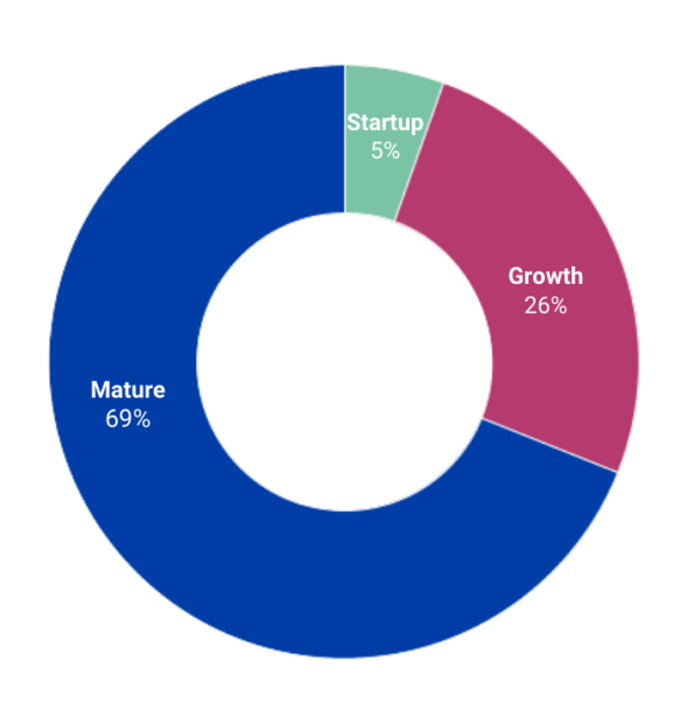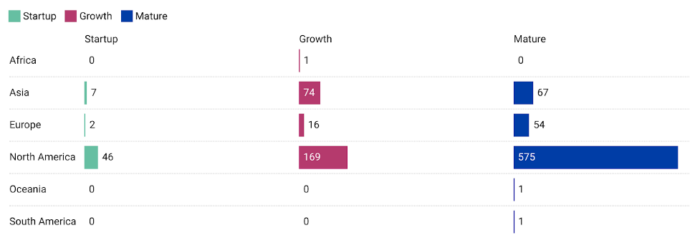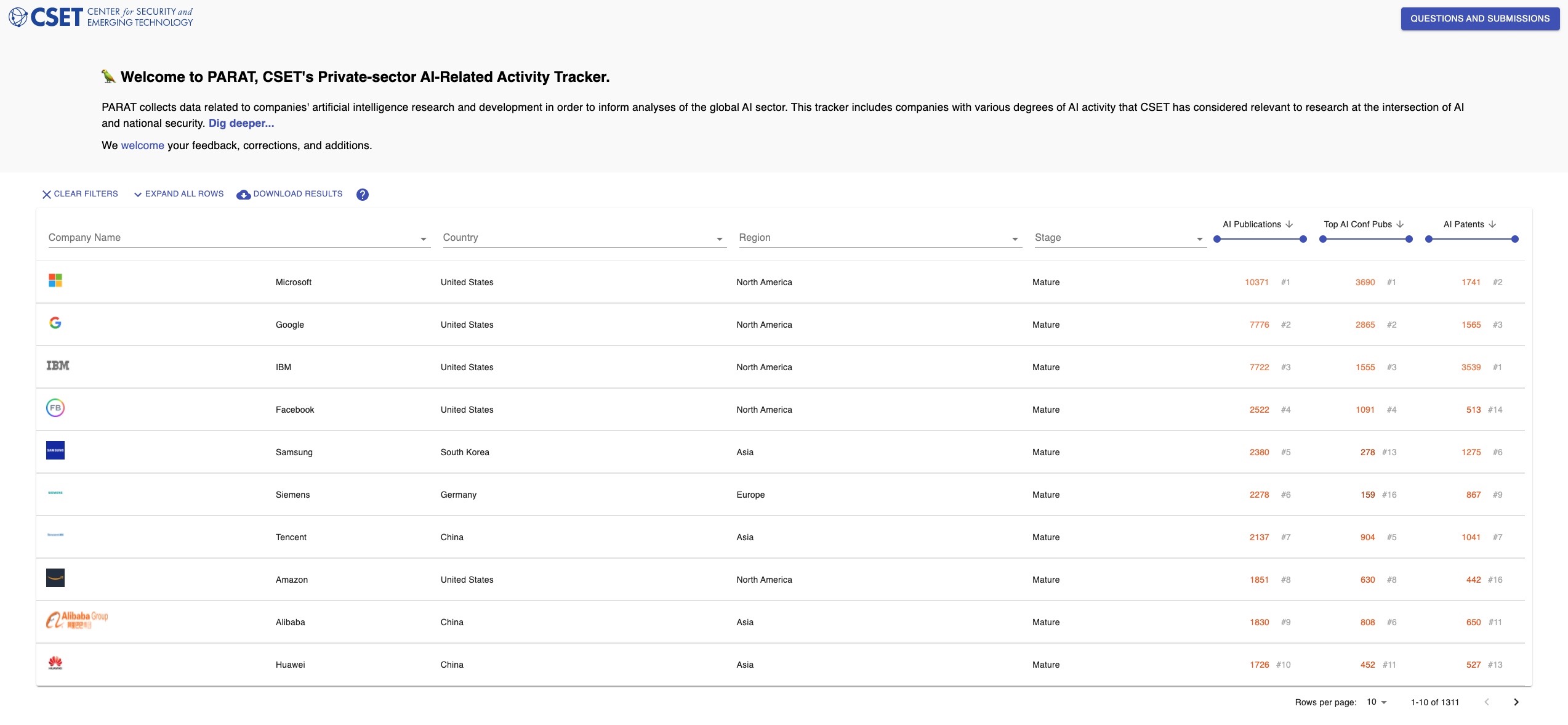In addition to the AI publications and AI patents filters discussed in previous data snapshots, CSET’s Private-sector AI-Related Activity Tracker (PARAT) also has a Stage filter, which categorizes companies based on various phases of development. Here, we will look into the breakdown of companies by Stage, as well as by Country and Region.
There are three stages a company can be assigned: Mature, Growth, or Startup. Note that if the data is unavailable to compute this label, a company is assigned “Unknown” in the Stage feature.1 Table 1 provides the details on how each stage is assigned to a given company using Crunchbase data.
Table 1. Description of PARAT Company Stage Categories
| Stage | Description |
| Startup | Designation for a company whose last funding round was an early-stage round (e.g., seed or angel). |
| Growth | Designation for a company whose last funding round was a mid-stage round (e.g., Series A-C). |
| Mature | Designation for a company meeting one or more of the following: 1. Publicly traded; 2. Has more than 1,000 employees; or 3. Raised funding in late-stage venture capital or private equity rounds (e.g., Series D or post-IPO rounds). |
Of the 1,311 companies in PARAT, 1,013 have one of the three stages assigned to them (13 percent of companies are labeled “Unknown”). Of the 298 companies categorized as “Unknown,” 84 percent are United States-based companies and 5 percent are China-based companies.
Figure 1, shows that the majority (698 companies) of the 1,013 companies are labeled as Mature, with Growth in second (260 companies) and Startup in third (55 companies). Because we identify AI companies by their investments in research and development, patents, and research publications, it is likely that “Mature” companies are over-represented, since they have more identifiable data (i.e., they publish more research and have more funding to invest). It is likely that PARAT does not include many AI “Startup” companies based on our company identification methodology.
Figure 1. Number of PARAT Companies by Stage

Using the Country filter, which indicates where a company is headquartered, we can further break down PARAT companies by stage and country.2 As mentioned in Exploring CSET’s PARAT, the list of companies in PARAT is not comprehensive. Thus, the results we display here are different ways to view PARAT data, but are not necessarily representative of all AI companies globally. Figure 2 shows the majority of countries have mainly “Mature”-stage companies included in PARAT, with Turkey and Lichtenstein both having only one “Startup” company listed. However China stands out with 53 percent of companies categorized as “Growth” and 44 percent categorized as “Mature.” Conversely, 21 percent of companies based in the United States are categorized as “Growth” and 73 percent are categorized as “Mature.”
Figure 2. Number of PARAT Companies by Country and Stage
To provide a more aggregated view, Figure 3 displays the number of companies by Stage and Region. The result: among PARAT companies in Asia (dominated by China-based companies), there are more companies categorized as "Growth" than "Mature." We see the opposite in North America (dominated by United States-based companies) with more companies categorized as "Mature" than "Growth."
Figure 3. Number of Companies by Region and Stage

In upcoming data snapshots, we will further analyze companies categorized as "Startup," "Growth," and "Mature," and compare their output differences in AI research publications and AI patents.
- Any privately-held company with no information on funding rounds and fewer than 1,000 employees, or no employee data will be designated “Unknown.”
- The sample of companies in PARAT may be over- or under-representing companies in certain regions of the world, and more companies will be added in the next version of PARAT.
